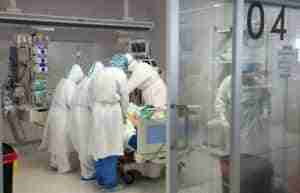Subvenciones para la investigación del patrimonio arqueológico en Castilla-La Mancha
Toledo, 24 de julio de 2024.- El Consejo de Gobierno ha dado el visto bueno esta semana a la resolución de la concesión de subvenciones por 450.000 euros para la realización de 42 proyectos de investigación del patrimonio arqueológico y paleontológico de Castilla-La Mancha para el año 2024. Así lo ha señalado hoy, en rueda de prensa, la consejera Portavoz, Esther Padilla, quien ha avanzado que desde que gobierna García-Page se han destinado más de cuatro millones de euros para diversos proyectos de investigación relacionados “a preservar el patrimonio regional y a conocerlo también de forma científica”.
Estos 42 proyectos, según ha explicado la consejera, se desarrollarán en todas las provincias de la región, de los que diez se harán en la provincia de Albacete; nueve en la provincia de Ciudad Real; siete en la provincia de Cuenca, ocho en la de Guadalajara y otros ocho en la provincia de Toledo.
During her intervention, Padilla referred that among the entities benefiting from these grants are the University of Castilla-La Mancha, the University of Alcalá de Henares, the UNED, or the Complutense University of Madrid, among other institutions. In addition, the Higher Council for Scientific Research or the municipalities of towns such as Balazote, Daimiel, Terrinches, Higueruela, Uceda, or Albacete have seen their archaeological and paleontological research projects selected.
In this way, according to the words of the councilor, “we contribute to collaborating in studies about our ancestors, for the benefit of the scientific community and researchers; but also for the neighbors of the municipalities where these studies are carried out”. She added that “we strive to know where we come from; shed light on lesser-known chapters of the history of Spain that occurred in our autonomous community and from which we still need more information to better understand our past”.
Estudios sobre la época romana y la visigoda
Furthermore, the spokesperson of the Emiliano García-Page Government mentioned some of the studies that are the subject of this year’s grants. In this sense, the councilor mentioned several research projects to be carried out by the University of Castilla-La Mancha such as the study of inhabited spaces in the Roman villa of Noheda; in the town of Villar de Domingo García in Cuenca; excavations at the Archaeological Park of Alarcos for its village and necropolis in Ciudad Real and in Poblete or the study on the consumption of meat and oysters in the suburb of Vega Baja in Toledo during the Roman and Visigothic periods, to be carried out in the regional capital.
Padilla also referred to another study by the Complutense University that will be carried out in the province of Toledo, in the town of Navalmoralejo, to conduct archaeological research in Ciudad de Vascos; as well as another study by the Higher Council for Scientific Research in the town of San Martín de Montalbán in Toledo, related to the research on the architectural configuration and uses of the early medieval monastery of Santa María de Melque.
She also mentioned the grant awarded to the Town Hall of the Toledo municipality of Villaminaya for the Moracantá dam site, “which we recently declared a Cultural Interest Site from the regional Government,” as she concluded.



















